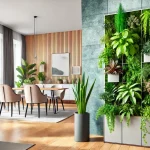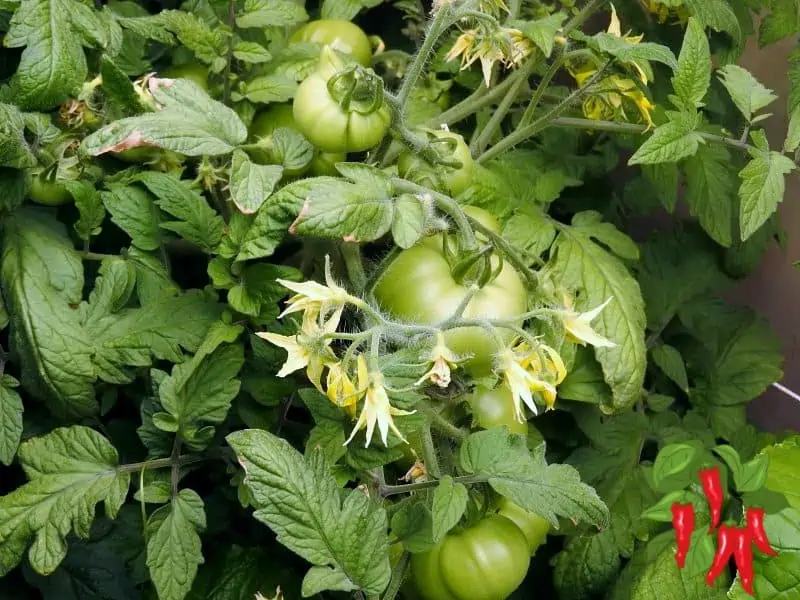This post may contain affiliate links. If you buy something from one of our links we may earn a commission. Thanks
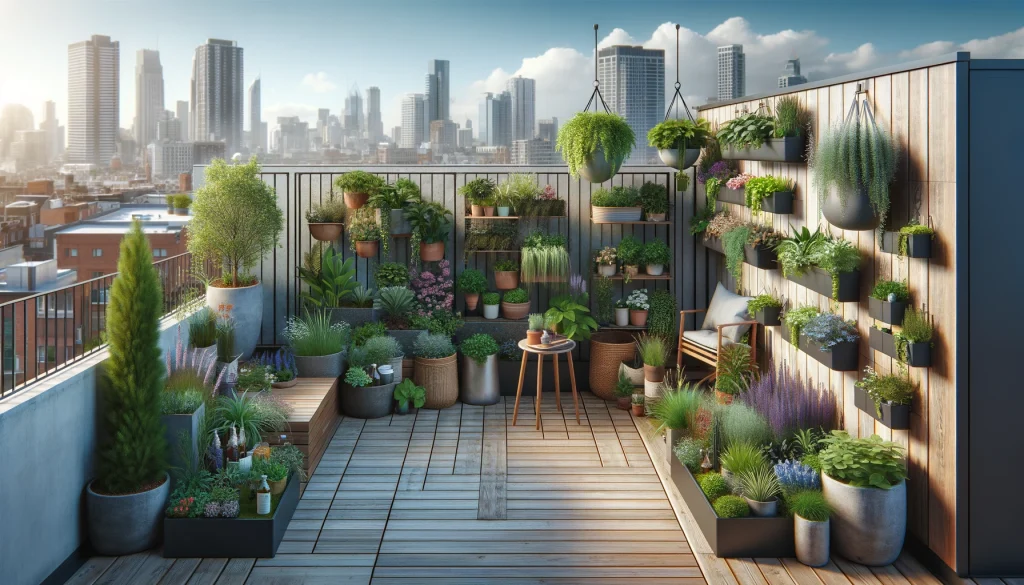
Discover the best small space rooftop garden hacks. Learn how to maximize space, choose the right plants, and maintain a thriving rooftop garden.
Small Space Rooftop Garden Hacks
Key Takeaways:
- Small space rooftop garden hacks include utilizing vertical gardening techniques, incorporating companion planting, and implementing drip irrigation systems.
- These strategies help maximize limited space, enhance plant health, and ensure efficient water usage, creating a vibrant and sustainable rooftop garden.
Looking for ways to transform your limited rooftop space into a green haven? Our small space rooftop garden hacks will guide you through maximizing space, selecting the right plants, and creating a sustainable urban garden that thrives in any cityscape.
Small Space Rooftop Garden Hacks
Are you looking to make the most of your rooftop space? A small space rooftop garden could be the perfect solution!
We will explore what exactly a small space rooftop garden is, why you should consider having one, and the benefits it can bring.
We will also discuss the challenges you may face, as well as provide tips on how to plan, design, and maintain a successful rooftop garden.
So, grab your gardening gloves, and let’s get started on creating your own urban oasis!
What Is a Small Space Rooftop Garden?
A small space rooftop garden refers to the cultivation of plants, herbs, and vegetables in limited urban areas such as rooftops or terrace gardens.
Rooftop gardening has gained popularity as cities expand, leading to less green space and a higher demand for urban agriculture.
Small space rooftop gardens offer a creative solution to utilize underutilized areas and add a touch of greenery to concrete jungles.
Urban spaces can transform into vibrant oases where individuals can grow their own produce, fostering a closer connection to nature amidst the hustle and bustle of city life.
Why Should You Have a Small Space Rooftop Garden?
Having a small space rooftop garden can significantly enhance the aesthetic appeal of your urban space while contributing to improved air quality and effective temperature regulation.
Roof garden or rooftop gardening is not only visually pleasing but also plays a vital role in reducing the urban heat island effect by providing insulation to buildings, thus lowering energy costs in both winter and summer months.
The greenery in rooftop gardens helps reduce carbon dioxide levels, absorbing pollutants, and releasing oxygen, thereby leading to a healthier environment.
What Are the Benefits of a Small Space Rooftop Garden?
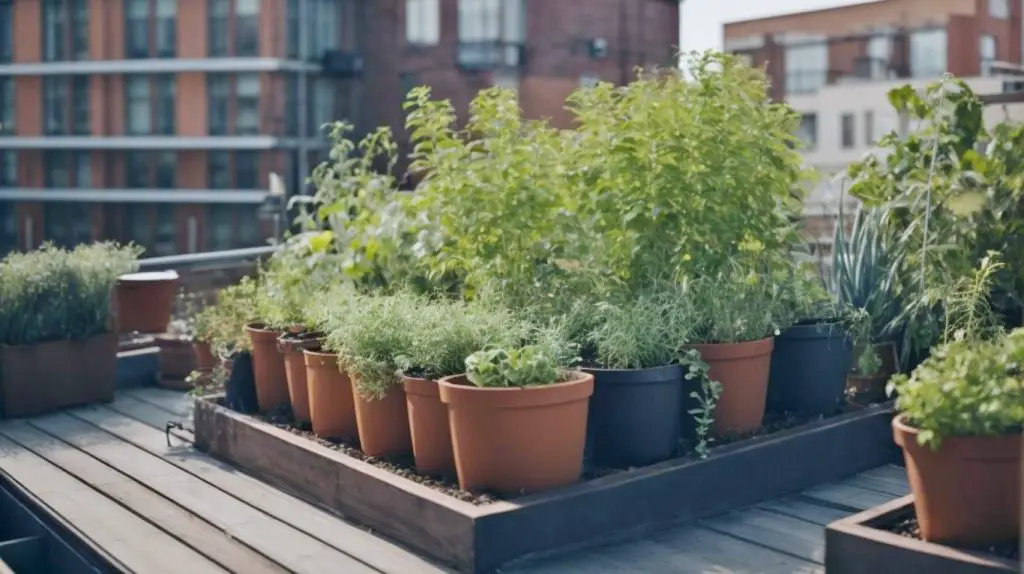
The benefits of a small space rooftop garden encompass the introduction of greenery into urban landscapes, enhancing air quality, and enabling fresh produce cultivation within city limits.
Utilizes Unused Space
One of the key benefits of a small space rooftop garden is its ability to utilize otherwise unused urban spaces creatively while considering the structural integrity of the building.
These rooftop gardens play a significant role in transforming barren rooftops into lush green areas, adding aesthetic value to concrete jungles.
By harnessing vertical space, they bring nature back into densely populated cities, creating havens for plants and beneficial insects.
These gardens contribute to reducing the urban heat island effect by providing a cooling effect through plant transpiration and shade.
Careful planning and implementation are crucial to ensure that the weight of plants, soil, and water containers is well-distributed to maintain the structural stability of the rooftop.
Reduces Urban Heat Island Effect
Small space rooftop gardens play a significant role in reducing the urban heat island effect by regulating temperatures through shading and vegetation, mitigating excessive sun exposure.
Rooftop gardens act as natural heat insulators, absorbing and reflecting sunlight away from buildings, thereby reducing the heat absorbed by urban surfaces.
By providing shade and evaporative cooling effects, rooftop gardens contribute to lower temperatures in urban areas, creating a more comfortable environment for residents and decreasing the need for air conditioning.
The presence of vegetation helps in reducing ambient temperatures by releasing water vapor through transpiration, further aiding in the process of temperature regulation.
Improves Air Quality
Small space rooftop gardens contribute to improved air quality by introducing plants such as succulents that aid in air purification and create a healthier urban environment.
Rooftop gardens act as natural air filters, absorbing pollutants and releasing fresh oxygen into the atmosphere, reducing the presence of harmful toxins.
Succulents, with their unique ability to thrive in arid conditions, play a vital role in this process, removing volatile organic compounds and enhancing overall air quality.
These gardens provide insulation, reducing energy consumption, and mitigating the urban heat island effect, contributing to a more sustainable and eco-friendly cityscape.
Provides Fresh Produce
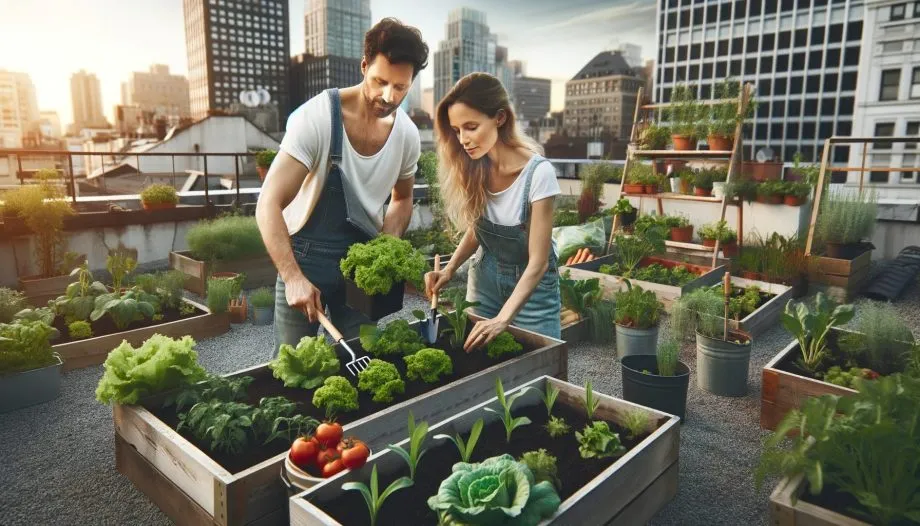
Small space rooftop gardens offer the advantage of growing fresh produce in the heart of urban settings, promoting the cultivation of vegetables and herbs through rooftop vegetable gardens.
These rooftop gardens not only enhance the visual appeal of city skylines but also contribute to sustainable food production right where it’s needed most.
The concept of rooftop gardening is gaining momentum for its ability to convert underutilized spaces into thriving green oases.
Rooftop vegetable gardens utilize vertical space efficiently, allowing urban dwellers to harness the power of nature for their daily sustenance.
What Are the Challenges of a Small Space Rooftop Garden?
Despite their benefits, small space rooftop gardens present challenges such as limited space, weight capacity considerations, and ongoing maintenance requirements.
One of the main hurdles faced in rooftop gardening is the constrained space available, which limits the types and quantities of plants that can be grown.
The weight capacity of rooftops is a crucial factor, as soil, plants, and water can add significant pressure on the structure.
Regular maintenance is essential for keeping the garden healthy and thriving, requiring consistent watering, pruning, and pest control. Balancing these factors is vital for the success of a small space rooftop garden.
Limited Space and Weight Capacity
Managing limited space and weight capacity is a critical aspect of planning a small space rooftop garden, requiring careful consideration of containers and structural integrity.
When designing a rooftop garden, there are several challenges that gardeners must navigate to ensure a successful and sustainable setup.
The primary concern is the limited space which restricts the number and size of plants that can be accommodated.
This limitation extends to the weight capacity that the roof can safely bear.
Inappropriate selections in plant containers can add unnecessary weight, potentially compromising the structural integrity of the building.
Therefore, choosing lightweight yet durable containers becomes essential.
Gardeners need to pay attention to the drainage system to prevent water accumulation, which further adds weight to the rooftop.
These challenges highlight the critical role of smart container selection and strategic planning in maintaining the equilibrium between aesthetics and functionality in rooftop gardening.
Exposure to Elements
Small space rooftop gardens are exposed to varying elements such as sunlight and wind conditions, necessitating strategic planning to protect plants from excessive exposure.
The intensity and duration of sunlight can greatly affect the growth and health of plants in rooftop gardens.
Excessive sun exposure can lead to parched plants and scorching leaves.
Wind conditions, on the other hand, can cause physical damage and dehydration, especially on elevated urban rooftops.
Hence, it is crucial to design the garden layout strategically, using elements like shading structures and windbreaks to provide shelter to the plants against these environmental factors.
Selecting the right plant species that can thrive in these conditions is essential for a successful rooftop gardening endeavor.
Accessibility and Maintenance
Ensuring accessibility and implementing a robust maintenance plan, including irrigation systems, is crucial for the long-term success of small space rooftop gardens.
Accessibility plays a key role in ensuring that the rooftop garden remains easy to reach for maintenance tasks and regular check-ups.
By incorporating ramps, stairs, or proper pathways, gardeners can efficiently navigate the space and attend to various plants and features.
The presence of a reliable irrigation system is vital to providing a consistent water supply to the plants, especially during dry seasons or extreme weather conditions.
Regular maintenance activities such as weeding, pruning, and pest control are essential for the overall health and appearance of the rooftop garden.
These tasks not only enhance the aesthetic appeal but also help in preventing plant diseases and ensuring optimal growth.
Maintaining the structural integrity of the rooftop itself, including checking for leaks or damage, is crucial to avoid potential hazards and structural issues.
Investing time and effort into consistent upkeep can significantly contribute to the sustainability and longevity of the rooftop garden.
How to Plan and Design a Small Space Rooftop Garden?
Planning and designing a small space rooftop garden involves selecting suitable plants, addressing soil considerations, and implementing measures for wind protection to create a thriving urban oasis.
In terms of choosing plants for your rooftop garden, opt for native urban plants that are well-suited to the local climate and can thrive in the conditions of a rooftop environment.
Consider plants that are drought-tolerant, low maintenance, and can withstand exposure to sunlight and wind.
A mix of perennials, succulents, ornamental grasses, and herbs can add texture and color while requiring minimal care.
Assess Your Space and Weight Capacity
Start by assessing your rooftop space, considering factors like USDA Zone compatibility and the installation of structures like cedar pergolas to support your garden.
Before looking into planting choices, take note of the sunlight exposure your rooftop receives.
Sun-loving plants such as tomatoes, peppers, and herbs require at least six hours of direct sunlight daily.
Assess wind patterns, as windy conditions can affect the health of plants. Observe the weight-bearing capacity of your rooftop to ensure it can support the garden’s weight.
Considering your USDA Zone is crucial for selecting plants that thrive in your region’s climate conditions.
Plants suited to your zone will have a higher chance of flourishing on your rooftop. Rooftop gardening success often hinges on choosing the right plants.
Determine Your Goals and Needs
Define your gardening goals and needs, whether it involves cultivating herbs, integrating birch trees, or incorporating teak furniture for a stylish rooftop retreat.
Considering a rooftop garden can be a fantastic way to utilize limited space efficiently, maximizing the potential of vertical planting and creating a serene outdoor oasis.
For those keen on growing their herbs, setting up a dedicated area with adequate sunlight and proper drainage is essential for their vibrant growth and easy access during culinary experiments.
Evergreen shrubs and trees not only add a touch of elegance to your garden but also provide welcome shade and lovely textures, making them an ideal choice for those seeking ornamental and functional additions.
Choose Suitable Plants and Containers
Selecting suitable plants and containers is essential for small space rooftop gardens, including options like climbing plants and lightweight containers for efficient utilization of space.
In terms of rooftop gardening, the right choice of plants can make a significant difference in the success of your garden.
Opting for climbing plants not only adds a vertical element but also maximizes the use of limited space.
These plants bring a touch of greenery while drawing the eye upward, creating a sense of depth in your rooftop oasis.
Pairing these climbing plants with lightweight containers and trellises offers a practical solution for rooftop gardens. Plastic containers are not only durable and weather-resistant but also lightweight, making them easy to move around and rearrange as needed.
Consider Sun and Wind Exposure
Account for sun exposure and wind conditions when designing your rooftop garden to ensure proper plant growth and health by implementing suitable protection measures.
Optimal sun exposure is essential for the photosynthesis process in plants, aiding in their growth.
Excessive sun exposure can lead to sunburn and desiccation of plant leaves. Wind can also cause damage by drying out the soil and damaging fragile plant structures.
To combat these challenges, consider installing shading structures or using shade-loving plants to shield your rooftop garden from extreme sunlight.
Windbreaks such as trellises or barriers can help create a more sheltered environment for your plants to thrive.
Plan for Irrigation and Drainage
Develop a comprehensive plan for irrigation and drainage in your rooftop garden, incorporating efficient systems.
When creating your irrigation system, consider the layout of your rooftop garden and the water requirements of the different plants you plan to grow.
Utilizing smart drip irrigation systems can help in efficient water distribution while reducing wastage.
To ensure proper drainage, installing systems like French drains or raised beds with gravel layers can prevent water stagnation and root rot.
By integrating these concepts, you can create a flourishing rooftop garden that thrives on well-planned irrigation and drainage strategies.
What Are Some Hacks for a Successful Small Space Rooftop Garden?
Implementing innovative hacks can enhance the success of your small space rooftop garden, incorporating design ideas, maintenance strategies, and wind protection solutions for optimal results.
In terms of rooftop gardening, maximizing the available space is crucial. Consider vertical gardening techniques to utilize the height efficiently. Hanging planters or vertical trellises can help grow more plants in a limited area.
Using lightweight containers and raised beds can make maintenance tasks easier and more manageable.
Opt for self-watering planters to ensure your plants receive consistent moisture, reducing the need for frequent watering.
Creating a windbreak is vital for rooftop gardens exposed to strong winds. Install trellises with densely planted vines or tall plants to act as a natural barrier against harsh winds, protecting your plants from damage.
Use Vertical Gardening Techniques
Implementing vertical gardening techniques can optimize space utilization in your rooftop garden, enabling the growth of various urban plants through innovative planting methods.
Vertical gardening is particularly advantageous for urban areas where space is limited, making it a perfect solution for rooftop gardens.
By utilizing vertical structures such as trellises, hanging planters, and wall-mounted planters, gardeners can maximize the use of available space.
This innovative approach not only adds aesthetic appeal to your garden but also promotes plant diversity by enabling the cultivation of a wide range of herbs, flowers, and vegetables.
Vertical gardening allows better air circulation around plants, reducing the risk of diseases and pests.
It also facilitates easier maintenance and harvesting, as plants are more accessible and organized, creating a visually pleasing and productive garden on your rooftop.
Incorporate Companion Planting
By incorporating companion planting strategies, such as pairing succulents with herbs, you can enhance the health and vitality of your rooftop garden ecosystem.
Companion planting involves strategically placing different plant species together to create a mutually beneficial relationship that supports growth and productivity.
Succulents, known for their water retention abilities, can provide shade and protection to delicate herbs, while herbs can repel pests that may harm succulents.
This symbiotic relationship not only promotes healthier plants but also maximizes space utilization in rooftop gardens, making them more efficient and aesthetically pleasing.
By harnessing the natural tendencies of various plant species, you can create a harmonious and thriving garden ecosystem that thrives with little intervention.
Utilize Container Gardening
Container gardening offers a flexible and practical solution for small space rooftop gardens, allowing for customized plant selections based on specific soil considerations and space constraints.
This gardening method is particularly beneficial for urban dwellers who may not have access to traditional garden beds or plots.
By utilizing various containers such as pots, hanging baskets, or planters, individuals can create a lush green oasis on their rooftops.
The versatility of container gardening allows for easy experimentation with different plant combinations, colors, and textures, adding a personal touch to the outdoor space.
The portability of containers enables gardeners to rearrange their plants as needed, optimizing sunlight exposure and aesthetic appeal.
Implement Drip Irrigation
Integrating drip irrigation systems can streamline watering processes in your rooftop garden, promoting water conservation and efficient moisture delivery to plants.
Drip irrigation is a method that provides water directly to the roots of plants, minimizing water waste through evaporation and runoff.
This system involves a network of tubes and emitters that deliver water slowly and precisely, ensuring that plants receive just the right amount of moisture they need.
One of the key benefits of drip irrigation in rooftop gardening is its ability to reduce water usage significantly compared to traditional irrigation methods.
By delivering water directly to the root zone, this system minimizes water loss due to wind or overspray, making it an eco-friendly choice for water conservation.
Create Windbreaks and Shade Structures
Establishing windbreaks and shade structures can safeguard your rooftop garden from harsh winds and excessive sun exposure, incorporating elements of modern roof garden design for aesthetic appeal.
Not only do windbreaks and shade structures protect from the elements, but they also create a comfortable microclimate for your plants, promoting healthy growth and longevity.
You can achieve a sleek, contemporary look that seamlessly blends with the overall design of your rooftop garden.
These structures not only serve a functional purpose but also add a touch of sophistication to the space, elevating the visual appeal of your urban oasis.
Small Space Rooftop Garden Hacks FAQs
Q. What are some creative small space rooftop garden hacks?
A. There are many different ways to make the most of a small space rooftop garden. Some hacks include using vertical planters, utilizing hanging baskets, using raised garden beds, and incorporating mirrors to create the illusion of more space.
Q. How can I ensure my rooftop garden is sustainable in a small space?
A. One way to make your small space rooftop garden sustainable is by using container gardening. This allows for proper drainage and the ability to move plants around as needed. Additionally, using organic and locally sourced materials can help reduce waste and support the environment.
Q. What types of plants are best for a small space rooftop garden?
A. Some plants that thrive in small space rooftop gardens include succulents, herbs, and compact vegetables like cherry tomatoes or peppers. It’s also important to consider the amount of sunlight your rooftop receives when selecting plants.
Q. How can I incorporate seating into my small space rooftop garden?
A. A simple and space-saving solution is to use collapsible furniture or stools that can be easily stored when not in use. You can also create built-in benches or use large cushions for comfortable seating.
Q. Are there any special considerations for watering a small space rooftop garden?
A. In a small space, it’s important to monitor and adjust watering to avoid over or under-watering. Consider using a drip irrigation system or self-watering containers to ensure plants receive the right amount of water.
Q. Can I grow a small space rooftop garden in colder climates?
A. Yes, it is possible to have a rooftop garden in colder climates. Consider using cold frames or greenhouses to extend the growing season, and choose cold-hardy plants that can withstand lower temperatures. You can also use artificial lighting to provide additional warmth for your plants.
Conclusion: Embracing Small Space Rooftop Garden Hacks
Creating a small space rooftop garden is a rewarding way to bring a touch of nature to urban environments.
By implementing innovative hacks such as vertical gardening, companion planting, and drip irrigation, you can maximize your limited space and create a thriving garden oasis.
Maximizing Space with Vertical Gardening
Vertical gardening is a key hack for small space rooftop gardens. Utilize vertical planters, trellises, and hanging baskets to grow upwards, making the most of the limited floor space.
Enhancing Plant Health with Companion Planting
Companion planting is a strategic approach that pairs plants together for mutual benefit. This hack not only saves space but also promotes a healthier, more productive garden.
Efficient Watering with Drip Irrigation
Implementing a drip irrigation system ensures that your plants receive the right amount of water, reducing waste and simplifying maintenance in your rooftop garden.
With these tips and hacks, your small rooftop garden will not only be a beautiful retreat but also a sustainable and productive space. Happy Rooftop Gardening!
Read more: Rooftop Gardening Ideas: 7 Tips and Tricks For Beginners
Visit my Amazon Influencer Page for videos and gardening products Grow Your Own Garden







